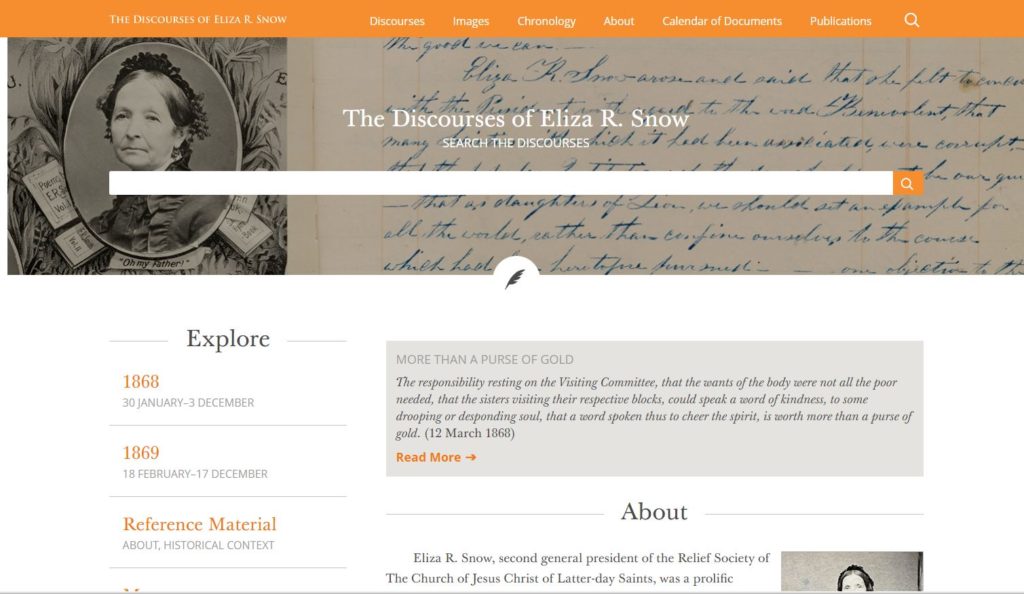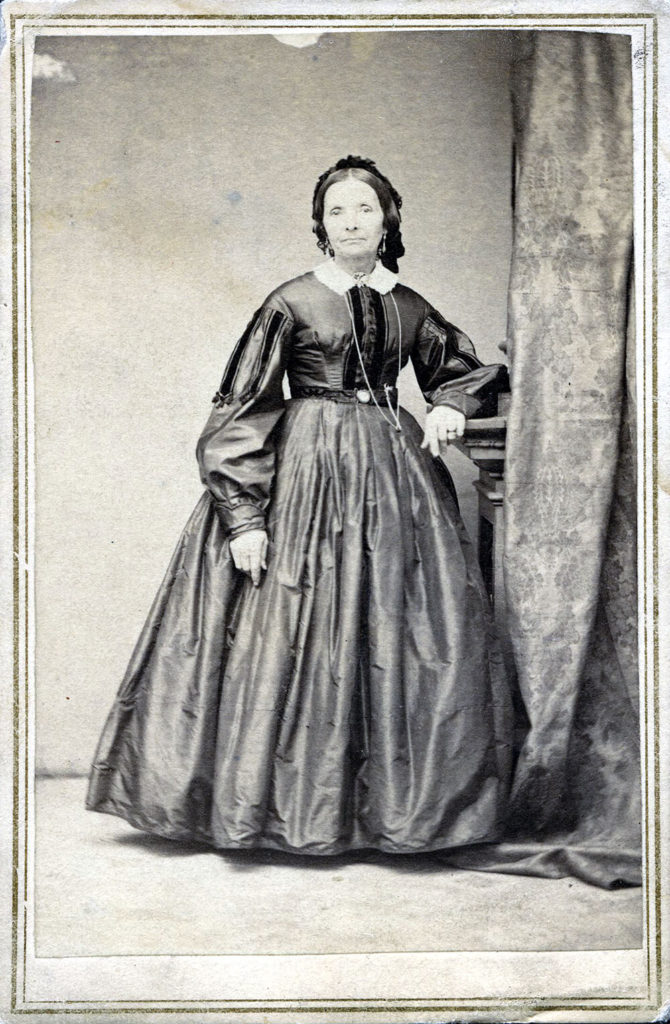Mabel Knell, age five, joined the Primary in her small southern Utah town when it was organized on 6 December 1880. Eliza R. Snow and Zina Young visited nearly all of the southern settlements, including Pinto, near Pine Valley. The minutes record that Eliza asked the children if they wanted to be organized, and she helped them appoint a presidency. Then she showed them a gold watch that Joseph Smith gave her back in Nauvoo in 1842. (1)

Mabel remembered something else significant, not recorded in the minutes: a young boy in Pinto was very sick and had been carried to the meeting. He requested a special prayer for his health. “Sister Snow told the children to arise to their feet, close their eyes, and repeat after her the prayer, one sentence at a time. She prayed for the sick boy. When they got through praying he got up, walked home, and got into a wagon without help. He was well from that time.” (2) Eliza certainly cared for the individual–especially this young boy; she also cared for the community, teaching the Primary association how to unitedly pray for one of their members–to draw upon the powers of heaven even in their young ages.
This was just one of Eliza R. Snow’s nearly 1200 discourses, recorded in minute books and in personal writings. The Church History Department is proud to present “The Discourses of Eliza R. Snow,” a website with the Church Historian’s Press. As second general Relief Society president, Snow became a prolific speaker, traveling to nearly every settlement in the Utah Territory. Her marriages to both Joseph Smith and Brigham Young gave her an intimate perspective of the early events of the Restoration. She enlarged the stakes of the church with her visits to the hinterlands, teaching, organizing, and connecting with women, youth, and children. And she returned to Salt Lake City with a more expansive view of the institution she served.

The Discourses of Eliza R. Snow will be a great resources for both scholars and a general audience. The ability to trace a significant female preacher, to understand current events in local areas with specificity to women, and to follow the circuitous trajectory of her theological teachings is unprecedented. Her explanation on personal ministry is personal and intimate. And her efforts to provide order to the various women’s organizations, to teach them about their temple blessings, and their family relationships are indeed poignant.
President Snow spoke with authority in several ways. She was the secretary of the Nauvoo Relief Society and had a clear understanding of the purpose of the women’s organization as set by Joseph Smith. She was assigned by Brigham Young in 1868 to assist the bishops in organizing ward Relief Societies and to instruct the sisters. Snow taught the proper manner in which to organize and she encouraged women to speak publicly–to have a voice. She was a firm supporter of plural marriage, female empowerment with women responsible for their own salvation, and in encouraging women’s education and civic participation.

While only fifty discourses from 1868-1869 are currently available, batches of 100 discourses will be uploaded quarterly. Snow appeared publicly until a few months before her death in late 1887, often speaking three times a day in different locations even in her 80s. Later batches will include speeches in the form of poetry given to the Polysophical Institute and the Literary and Musical Associations in the 1850s, a speech given to her students in Nauvoo in 1843, and a fiery Pioneer Day diatribe on 24 July 1849. Snow spoke to Relief Societies, Young Ladies and Primary Associations, Cooperative Retrenchment groups, grain committees and silk associations, public meetings, anniversary celebrations, and general ward groups.
An interactive map shows the range of Snow’s travels and links to the discourses. A helpful reference section includes explanation of historical context, Snow’s chronology, and links to her publications. Where available, photographs of the places in which she spoke are available, bringing her discourse alive in a material way.
This new addition to the Church Historian’s Press website joins other endeavors, including the diaries of Emmeline B. Wells, the journals of George Q. Cannon and George F. Richards, and online versions of First Fifty Years of Relief Society and At the Pulpit. Also new is the ability to search across all church history sites.
(1). Pinto Ward Records, Primary Minute Book, 1880-1890, 6 Dec 1880, 3, BYU.
(2). Mabel Knell, “Our Primary,” The Juvenile Instructor 28, no. 9 (1 May 1893): 301.
Thank you for such a wonderful write-up on this project, Jenny. It is so exciting to have this resource. As you say, the benefits are extraordinary.
Comment by J. Stapley — July 16, 2020 @ 10:44 pm
Thanks, Jenny. It’s amazing to see this project go live. Congratulations to you and the others involved!
Comment by David G. — July 17, 2020 @ 1:11 pm